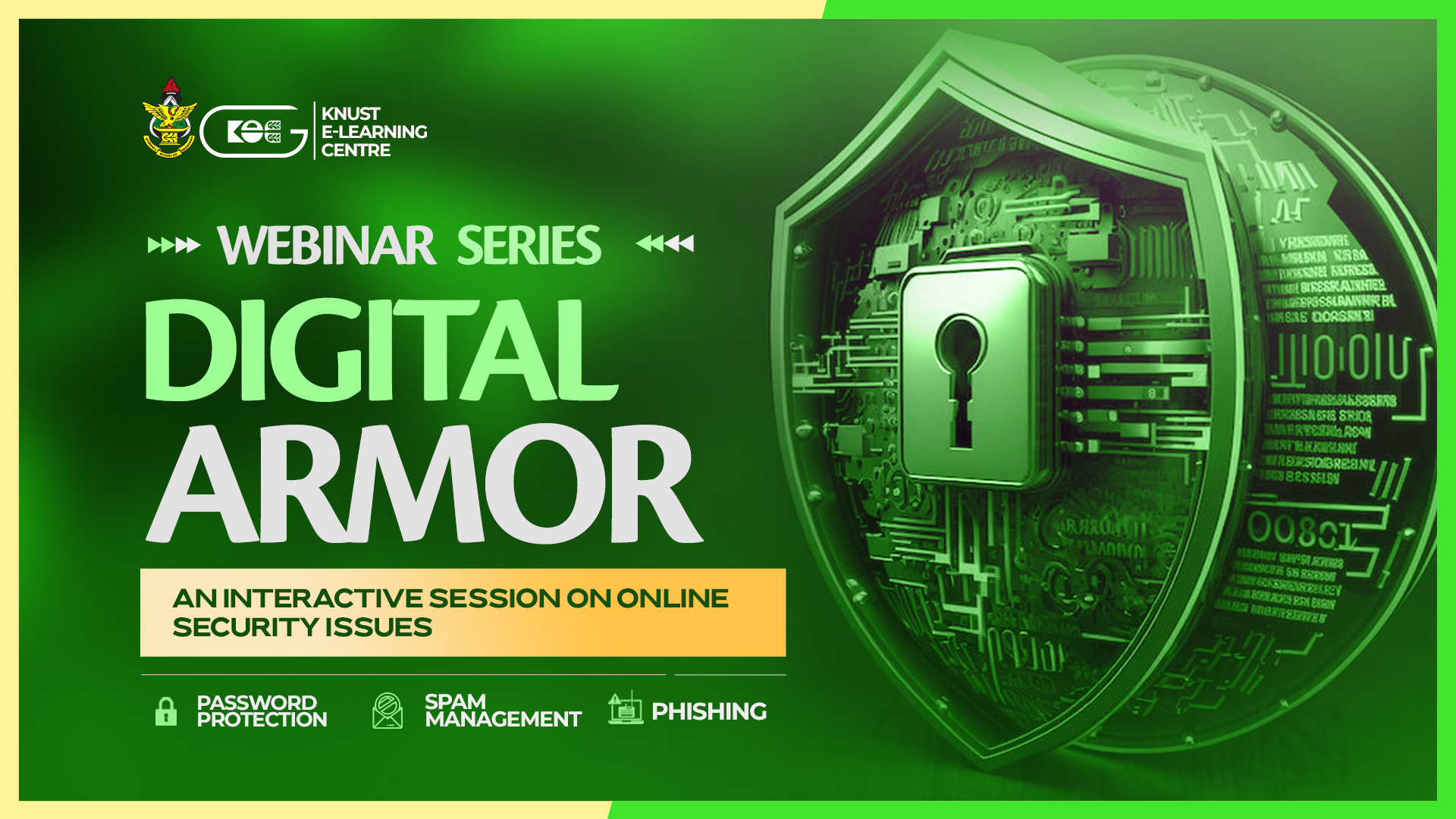KNUST E-Learning Centre hosts digital armor webinar on cybersecurity
The KNUST E-Learning Centre has held a webinar on cybersecurity titled Digital Armor to educate participants on staying safe in the digital space. The session was led by Mr. Phanuel Seli Kwadwo Asense, a Senior Systems Analyst at the Department of Information Security and Technology Assurance, KNUST.
Mr. Asense explained that the webinar is to help participants understand basic cybersecurity threats and ways to protect themselves. "We want to look at how we can stay safe online and what makes up the digital armor.
These are simple but important tools we can use to protect ourselves," he said. Cybersecurity basics He described cybersecurity as the practice of protecting computer systems, networks, and data from cyber threats.
"Threats can come in different forms. Some people try to break into your system to steal data, disrupt services, or cause damage. These are things we must guard against," he said.

He identified four main sources of cyber threats: Hackers – Skilled individuals who use unauthorized means to access systems. Cybercriminals – People who steal personal data, financial information, or engage in identity theft.
Malware – Harmful software such as viruses, spyware, and ransomware. Insiders – People within an organization who misuse their access to steal information or cause harm. "Cybercriminals can use stolen data to pretend to be someone else, take money from accounts, or trick others into sending them money.
Malware can also damage files, spy on activities, or block access to important data until a ransom is paid," he explained. Passwords and digital safety Mr. Asense mentioned the importance of strong passwords.
"Passwords act like keys. If you use a weak password, it is like leaving your door open. The stronger the password, the harder it is for hackers to break in," he said. He advised using a combination of letters, numbers, and special characters to create strong passwords.
"A good password should have at least 12 characters. It should mix uppercase and lowercase letters, numbers, and symbols. Avoid using the same password for different accounts," he added. He also warned against sharing passwords or writing them down where others can see them. "One way to stay safe is to use Two-Factor Authentication (2FA).
This adds an extra step, so even if someone gets your password, they still cannot access your account without a second code," he said. Protecting against scams and threats He highlighted common online scams such as phishing and spam emails. "Phishing is when hackers send fake emails to trick people into sharing their personal information. Spam messages can also carry hidden threats.
Do not open links from unknown sources," he cautioned. He advised participants to be careful about the information they share online. "Everything we do online leaves digital footprints.
Hackers can use these to track us. Be mindful of where you go and what you click on," he said Mr. Asense urged participants to take cybersecurity seriously. "We live in a digital world, and we must protect ourselves. Keep your passwords strong, avoid suspicious links, and always be cautious," he advised.
The Digital Armor webinar is part of the KNUST E-Learning Centre's effort to promote digital safety and awareness among students, staff, and the public.
Published: 17th March, 2025 Source: KNUST E-Learning Centre
